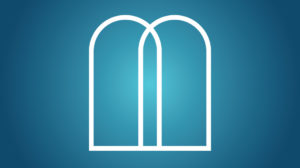The Source of Existence

All is not well in the Midbar. There’s turmoil in the camp, rebellion in the air. Korach and his followers are questioning Moshe’s appointment of several individuals to positions of authority,
Moshe, the finest advocate Klal Yisrael ever had, the leader who spent 40 days and nights without food or drink in supplication on behalf of his people, seems to abandon his defending role as he calls for a punishment both swift and spectacular (Bamidbar 16:28–30): “By this you will know that Hashem sent me to do all these acts; it didn’t come from my heart. If these people [Korach and his followers] die the death of all men, then Hashem has not sent me. But if Hashem produces a new creation and the earth opens its mouth and swallows them and all that is theirs, and they go down alive into the grave, then you will know that these men have rebelled against Hashem!”
Why this horrific proposal? Why doesn’t Moshe ask Hashem for erech apayim, an extension of time, as he did on other occasions of offense in the camp? Was Korach’s sin so grave that he couldn’t be granted the opportunity to repent before facing Hashem’s wrath?
The proposed punishment is also unprecedented. No mere plague fell Korach and company. Pirkei Avos tells us that the extraordinary “mouth of the earth” was created during the first week of Creation. As the Malbim describes, the earth turned into a grotesque and avaricious creature, opening its mouth and then closing it, swallowing the sinners, and leaving behind not even their smallest possession. “And all of Yisrael who were around them fled at the sound, saying, ‘Lest the earth swallow us.’ ”
Undermining the Foundation
History is replete with movements, feuds, and uprisings waged by subordinates who resented their leader’s authority. Yet Korach’s uprising was much more serious than, and reverberated far beyond, the typical campaign of an aggrieved individual.
The eighth principle of the Rambam’s Principles of Faith is commonly referred to as Torah min hashamayim, the belief that the Torah is of Divine origin: “I believe with complete faith that the entire Torah that is in our possession is the same one that was given to Moshe Rabbeinu.” This principle actually contains two elements: the fact that Hashem gave us the Torah through Moshe, and the fact that the Torah we have today is this very same Torah.
As the Rambam explains in detail, Hashem dictated the entire Torah to Moshe Rabbeinu, who then transmitted it to us. Our Sages describe Moshe as “sofer hama’atik mi’sefer kadmon — a scribe copying an existing document,” for he recorded it precisely as he heard it, word for word. The Rambam labels as a heretic one who claims that the entire Torah was written by Hashem except for one verse, which he believes was authored by Moshe.
Since every word in the Torah was written by Hashem, there is no pasuk that’s irrelevant or trivial. As the Rambam puts it, there’s no difference, in holiness and veracity, between the words, “Shema Yisrael Hashem Elokeinu Hashem echad” and “the sons of Cham were Cush, Mitzrayim…” Even verses that seem unimportant will reveal insights and wonders to the talmid chacham who can decipher them, for the Torah’s wisdom is unfathomable. For this reason, a sefer Torah that’s missing one letter is not “almost perfect.” It is considered passul, unfit for use, until it’s repaired.
Inseparable Elements
The word “Torah” doesn’t only denote the Written Law, the Torah shebichsav. Moshe also received the entire Torah shebe’al peh, the oral tradition that clarifies and interprets the written portion. Belief in the eighth principle includes acceptance of the Oral Law as well as the Written Law. The Rambam states that one who does not believe in the Oral Tradition is also considered a heretic.
Even a cursory glance at the Chumash reveals the impossibility of fully understanding the Torah shebichsav and the inability to apply its directives to daily life, without the detailed explanations of the Oral Tradition. The Rambam offers some examples. The Chumash describes tefillin as “a sign on your arm and between your eyes.” It’s the Oral Law that tells us that these “signs” are square, black, made of leather, and contain specific parshiyos. The Chumash tells us we must “live in huts for seven days” during the Yom Tov of Succos. Information regarding the construction of these huts and what activities must take place inside of them is found, again, in the Torah shebe’al peh.
Clearly, the Torah shebichsav and the Torah shebe’al peh are inseparable. Even those parts of the Oral Tradition that do not elucidate a specific verse are nonetheless linked with the Written Law. The Ramban tells us that every piece of knowledge that Moshe was taught at Sinai, the entire Torah shebe’al peh, is alluded to somewhere in the Torah shebichsav — if not in the words themselves, then in the numerical values of the letters [the gematrias] or in the shapes of the letters or their crowns.
Moshe was not permitted to write down the Torah shebe’al peh. Instead, he transmitted it “live,” communicating it verbally to his students, who then taught others, and so on throughout the generations.
It’s important to know that when we refer to this chain of transmission as the mesorah of Torah, it’s not a vague concept or whimsical metaphor. In fact, the Rambam carefully documents the names of 40 specific individuals who served as links in the chain from Moshe Rabbeinu at Sinai, until Rav Ashi, the Sage who wrote down the Oral Law in the text known today as the Talmud Bavli.
Generations of Toil
The Gemara (Menachos 29a) relates a fascinating conversation between Hashem and Moshe:
“When Moshe ascended on High to receive the Torah, he found HaKadosh Baruch Hu embellishing the letters of the sefer Torah with tagim [crowns]. When Moshe wondered about their significance, Hashem told him, ‘In the future, someone by the name of Akiva ben Yosef will derive multitudes of halachos from them.’ ”
“ ‘Ribbono shel Olam, show him to me!’ ”
“Moshe found himself in a beis medrash where Rabi Akiva was lecturing to his talmidim. Hashem told him, ‘Go sit in the back.’ ”
“Moshe retreated eight rows of seats, but found that he could not understand the discourse. He was weak with distress. Then, one of the talmidim questioned Rabi Akiva, ‘Rebbe, what is the source of this halachah?’
“ ‘It is a halachah l’Moshe mi’Sinai [a halachah that Moshe received at Sinai and transmitted to us]!’ ”
“And Moshe was at peace.”
What an enigmatic passage! Why didn’t Moshe recognize the information that Rabi Akiva was teaching in his name?
Rashi says that when Moshe had this vision, he hadn’t yet learned that particular halachah, but the Ohr HaChaim Hakadosh explains differently. While it’s true that Moshe received every detail of the entire Torah, shebichsav and shebe’al peh — in the words of Chazal, he was even informed of “every new understanding that a talmid chacham would one day extract from the verses!” — he wasn’t given the cross-reference in all cases. He didn’t know where each halachah is alluded to in the Written Law. Instead, this discovery was left for the talmidei chachamim of all generations who would spend days and nights plumbing the depths of Torah and attempting to reconcile the written text with the oral explanations — no simple feat.
Chazal describe the Torah shebe’al peh as a study that weakens and exhausts those who toil to understand it. This study encompasses more than the details and explanations we received from Moshe, for some halachos were derived by Sages in later generations, who decoded the Torah by using the middos she’haTorah nidreshes bahen — specific tools of interpretation that Moshe taught. Since these halachos were not received in direct transmission from Moshe, they were sometimes subject to controversy, which the Sanhedrin then resolved by majority rule.
If Moshe received the entire Torah shebe’al peh from Sinai, why did the Sages need to derive some halachos on their own? Some of these were halachos that Moshe was not permitted to teach; others were halachos that were forgotten over time due to shock over his death, weaker intellectual abilities, the stress of persecutions, or because they didn’t apply frequently.
In all cases, the voice of the Sages was authoritative in establishing the halachah where there wasn’t a transmission from Moshe. In addition, the Sanhedrin was permitted to legislate its own gezeiros and takanos, various enactments for specific reasons. Some examples are hilchos muktzeh on Shabbos, lighting Chanukah candles, and the mitzvos of Purim. These are binding on all of Klal Yisrael.
Existence — or Extinction
Klal Yisrael’s acceptance of Torah min haShamayim took place at Sinai in two different settings. On the one hand, the Nation famously accepted the Torah with the eager words of “naaseh v’nishma.” The Gemara (Shabbos 88a) relate,s however, that a forced acceptance also took place. Hashem lifted the mountain over them as if it were a barrel, and He said, “If you accept My Torah, it is good and well, but if not, this will be your grave [i.e., you’ll be buried alive under the mountain].” Why was this ominous warning necessary after Klal Yisrael’s enthusiastic response?
The Maharal reveals the underlying message: When it comes to Torah, there really is no choice, no voluntary participation. If there’s no Torah, there is no raison d’etre, there is only extinction. Life without Torah is not only empty, sad, and meaningless — it’s simply unsustainable.
We can now understand Korach’s fate. The Panim Yafos explains: Korach’s rejection of Moshe’s instructions was synonymous with denial of Torah shebe’al peh. This was no simple sin or petty revolt. When Korach refused to retract his accusations, Moshe called for his immediate oblivion. “By this you will know that Hashem sent me to do all these acts; it didn’t come from my heart!” Echoing Hashem’s threat to Klal Yisrael that they would be buried alive by the mountain, Moshe did more than ask for a death sentence. He called for Korach to simply disappear, without a trace, into the earth, for he had lost his right to exist.
Yet a reminder of Korach’s tragic mistake does remain. Rabbah bar bar Chanah (Bava Basra 74a) tells of an Arab merchant who brought him to the place where Korach vanished, and he quotes the words he heard issuing from the depths of the earth: “Moshe emes v’Soraso emes — Moshe is true and his Torah is true.”
The Talmud Yerushalmi notes that Korach denied two of the Thirteen Ikrim: belief in Moshe Rabbeinu’s nevuah and belief in the Torah. Thus, explains the Brisker Rav, the reverberating exhortation serves as reaffirmation of each of these principles: Moshe is true, and the Torah he taught is true.
Have you witnessed the joy of Simchas Torah? Have you seen inspired fathers and exhilarated sons jumping up in the air to the refrain of “Moshe emes v’Soraso emes”? One wonders, why do they leap at these specific words? Perhaps the explanation lies in the fact that these are the very words that repudiate Korach’s heretical assertions. If the denial of Torah plunged Korach deep into the abyss, then the embracing of Torah does the reverse. It sends us, ecstatic with the truth, soaring to unimaginable heights.
Sources include teachings of Rav Bentzion Epstein, Rav Dovid Cohen, Dynamics of Dispute by Rabbi Zvi Lampe, and others.
(Originally featured in Family First, Issue 490)
Oops! We could not locate your form.







